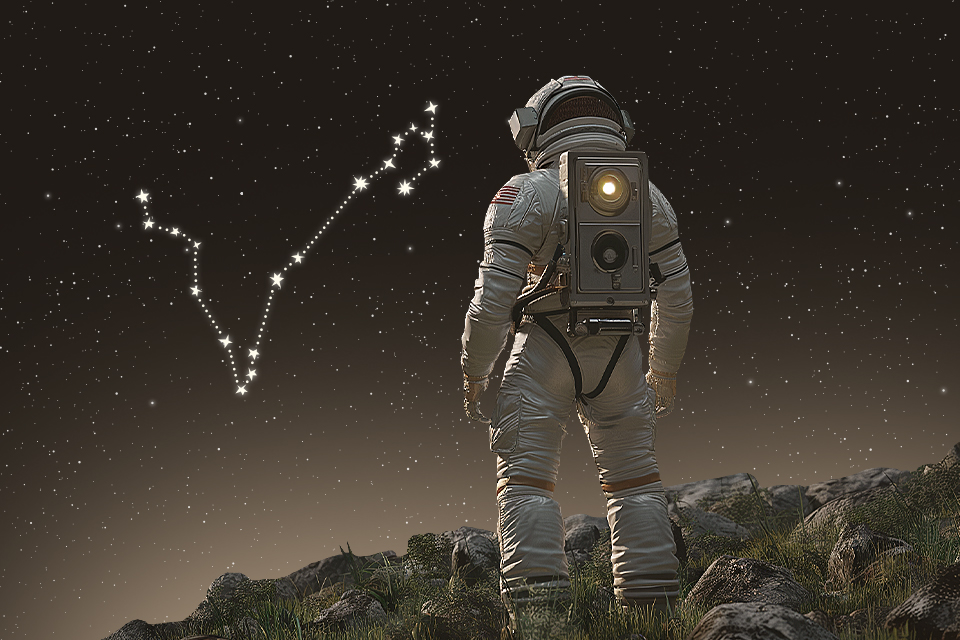According to astrologers, on February 20, the Sun entered the sign of Pisces. It got its name from the zodiac constellation of the same name. It is interesting not only because the ecliptic passes through it, but also because of the astronomical objects that are located in it.

1. When does the Sun actually enter the sign of Pisces?
Astrologers claim that the Sun is in the constellation Pisces from February 20 to March 20, although in fact it will not move there at all for most of the specified period of time. The fact is that people who talk about the influence of the position of the luminaries in the sky on human lives use the system of celestial coordinates adopted many centuries ago. It does not take into account either the precession of the axis of rotation of our planet, or the exact division of the starry sky into constellations, introduced only in 1922. However, astronomy knows all this. And it clearly says that the Sun will enter the constellation Pisces only on March 12, and will leave it on April 18, turning into Aries.
2. How to see the constellation Pisces?
The constellation Pisces does not contain very bright stars, so it is not so easy to find it in the sky. Andromeda can serve as a reference point here. Its three stars form a very noticeable arc in the sky. On one side of them is a nebula, which is actually the spiral galaxy closest to us. And on the other, a long chain of not very faint stars stretches down.
Near the Alrischa star, another “star chain” joins it from the west. Together they form the most prominent part of the constellation Pisces. However, February is not the best time for its observations. This month, it appears in the evening immediately after sunset over the western horizon, but quickly disappears behind it.
3. Why is the constellation Pisces so called?
The constellation Pisces got its name back in ancient times. The most popular version connects it with the legend of the war of the Olympian gods with the monster Typhon. The war did not turn out very well, and the celestials had to flee. In particular, the goddess of love Aphrodite and her son Eros had to turn into fish to hide in the river. They were seen by the inhabitants of the Mediterranean in this constellation.
Another version is also related to Aphrodite, but tells a different story. Allegedly, an egg fell into the waters of the Euphrates River. The fish pushed it to the shore, a goddess appeared from it, who, as a sign of gratitude, placed the inhabitants of the reservoir in the starry sky.
4. Which star in the constellation Pisces is the nearest?
Like any other constellation, Pisces consists of luminaries located at different distances from the Sun. The nearest of them is Van Maanen’s Star. However, despite the fact that it is located at a distance of only 14 light-years, it is impossible to see it with the naked eye or even with binoculars. This is because this star is the closest single white dwarf to us. Sirius B and Procyon B are even closer, but they orbit their companions, in which rays they hide.
Van Maanen’s star is a remnant of a sun-like star. It survived the stage of the red giant and now represents an incredibly dense core of the deceased luminary. Its mass is 70% solar, but at the same time it has a size comparable to Earth.
5. Are there planets in the constellation Pisces?
The constellation Pisces regularly includes planets of the Solar System, and this, astrologers say, should influence our destinies. But there are also worlds that are constantly there, because they orbit the stars of this constellation. An example would be the star 54 Piscium. It is an orange dwarf, about half the size of the Sun, located 36 light-years away from us.
Two objects orbit around 54 Piscium. One of them is a brown dwarf about 50 times more massive than Jupiter. The second is a gas giant about the size of Saturn.
Two more planets orbit HD 217107. The star is located at a distance of 64.3 light-years from us, it is a slightly larger and older analogue of the Sun. Its planets are gas giants, more massive than Jupiter.
Follow us on Twitter to get the most interesting space news in time
https://twitter.comne/ust_magazine


